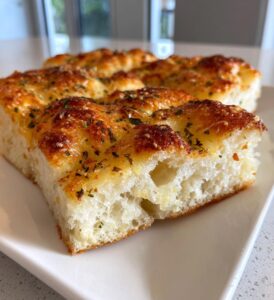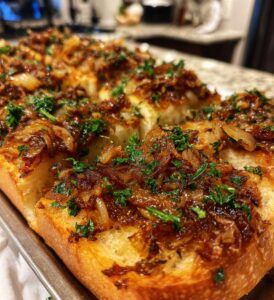Introduction to Garden Vegetable Pie
A garden vegetable pie isn’t just a recipe—it’s an edible celebration of freshness, flavor, and comfort. Made with crisp seasonal produce, nestled in a flaky golden crust, and baked until the kitchen smells like pure heaven, this dish is a wholesome way to bring vegetables to center stage. Whether you’re cooking for a weeknight dinner, a Sunday lunch, or a special family gathering, it’s versatile enough to impress every time.
The magic of this pie lies in its adaptability. You can stick to classic combinations like carrots, peas, and potatoes, or get adventurous with zucchini, bell peppers, and spinach. Herbs like thyme and parsley add a fragrant depth, while a touch of cream or cheese creates a luscious texture that balances the natural sweetness of vegetables.
If you’ve been hunting for recipes that turn everyday vegetables into something crave-worthy, this guide will walk you through every step—from choosing the best produce to baking a pie that holds its shape beautifully on the plate.

Learn more about hearty and flavorful bakes in our Garden Zucchini Cheddar Bread recipe (fallback cornerstone link) to see how garden-fresh produce transforms into irresistible comfort food.
Essential Ingredients for Garden Vegetable Pie
A great garden vegetable pie starts with choosing the right ingredients. While the recipe is wonderfully flexible, the quality and combination of your produce, dairy, and seasonings will determine whether your pie is simply good or truly unforgettable. The beauty of this dish lies in its ability to showcase the best of what’s in season while allowing room for personal taste.
Fresh Vegetables to Include for Best Flavor
The vegetables are the heart of your pie, so pick ones that bring both flavor and texture. You can mix and match based on what’s available in your garden, at the farmers’ market, or in your local grocery store.
| Vegetable | Flavor Profile | Best Season | Tips for Use |
|---|---|---|---|
| Carrots | Sweet, earthy | Fall & winter | Slice thin for quicker cooking |
| Zucchini | Mild, slightly sweet | Summer | Pat dry to prevent sogginess |
| Bell Peppers | Sweet & crisp | Summer & early fall | Roast for deeper flavor |
| Mushrooms | Savory & umami-rich | Year-round | Sauté to remove excess moisture |
| Broccoli | Fresh, slightly bitter | Fall & spring | Blanch before adding to pie |
| Spinach | Mild & leafy | Spring & fall | Squeeze out moisture after wilting |
| Peas | Sweet & tender | Spring & early summer | Use fresh or frozen |
Pro Tip: Aim for a mix of colors—greens, oranges, reds—not only for nutrition but also for a visually appealing slice that makes your pie look gourmet.
Dairy, Herbs, and Spices That Elevate the Dish
While the vegetables provide substance, dairy and seasonings bring the richness and flavor depth that make your pie irresistible.
- Cheese Options: Sharp cheddar for tang, mozzarella for stretchiness, or feta for a salty kick.
- Cream or Milk: Adds smoothness to the filling—heavy cream for richness, whole milk for a lighter option.
- Butter: Essential for the crust and for sautéing vegetables for a richer taste.
- Fresh Herbs: Thyme, rosemary, basil, and parsley bring fragrance and complexity.
- Spices: A pinch of nutmeg pairs beautifully with creamy fillings, while paprika adds warmth.
- Salt & Pepper: The simplest yet most important seasonings—adjust to taste.
Discover great ideas like Homemade Pear Butter Recipe – The Ultimate Guide to Perfect Fall Flavor if you want to pair your savory pie with a subtly sweet homemade spread for a unique meal.
By starting with high-quality produce, flavorful herbs, and just the right dairy, you set the stage for a pie that’s rich, colorful, and packed with natural flavor. In the next part, we’ll focus on crafting the perfect pie crust—the foundation that holds it all together.
Preparing the Perfect Pie Crust
If the vegetables are the heart of your garden vegetable pie, the crust is its backbone. A well-made crust doesn’t just hold everything together—it adds texture, flavor, and that satisfying bite that makes the whole dish memorable. Whether you decide to go the homemade route or use a store-bought option, the goal is the same: a golden, flaky base that complements the savory filling without becoming soggy.
Choosing Between Homemade and Store-Bought Crust
Homemade Crust:
- Pros: Full control over ingredients, fresher taste, customizable flavors (e.g., adding herbs or cheese to the dough).
- Cons: Requires more time and precision.
- Best For: Special occasions, when you want to impress or enjoy baking from scratch.
Store-Bought Crust:
- Pros: Convenient, consistent results, no rolling required.
- Cons: Less customizable, may contain preservatives.
- Best For: Weeknight dinners or when you’re short on time.
| Type | Prep Time | Flavor Potential | Skill Level Needed |
|---|---|---|---|
| Homemade All-Butter Crust | 15–20 min | Rich, buttery | Moderate |
| Homemade Shortening Blend | 15–20 min | Extra flaky | Moderate |
| Pre-Rolled Store-Bought | 2–3 min | Neutral | Easy |
| Frozen Pie Shell | 1–2 min | Neutral | Easy |
Pro Tip: If you use store-bought crust, brush it with a light egg wash and pre-bake (blind bake) for 8–10 minutes before adding the filling. This helps prevent a soggy bottom.
Tips for a Flaky, Buttery Base
- Keep Ingredients Cold – Cold butter and ice water are key to creating steam pockets in the crust, which makes it flaky.
- Don’t Overwork the Dough – Mix until just combined. Overmixing develops gluten, which makes crust tough.
- Rest the Dough – Chill for at least 30 minutes before rolling to relax the gluten and make it easier to handle.
- Blind Bake for Creamy Fillings – Especially important if your pie has a rich, creamy filling that could release moisture.
- Season Your Dough – A pinch of salt (and even a sprinkle of herbs) adds subtle but noticeable flavor.
Check out Peach Pie Cruffins Recipe – The Sweet Twist You’ll Fall in Love With to explore another creative way pastry dough can transform a dish into something unforgettable.
A perfect crust doesn’t just happen—it’s the result of good ingredients, careful handling, and the right baking techniques. In the next part, we’ll turn our attention to making the creamy filling that gives garden vegetable pie its signature comforting texture.
How to Make Creamy Garden Vegetable Pie
One of the most comforting versions of garden vegetable pie is the creamy style—rich, velvety, and full of tender vegetables coated in a luscious sauce. This style bridges the gap between a hearty pot pie and a vegetable tart, giving you the best of both worlds: nourishment and indulgence.
Creating a Smooth and Rich Filling
A creamy vegetable pie filling starts with a balance—rich enough to satisfy but not so heavy that it overshadows the fresh produce.
Base for the Cream Sauce:
- Butter – Adds richness and helps create the roux (the thickening base).
- Flour – Thickens the sauce while keeping it smooth.
- Milk or Cream – Whole milk for a lighter sauce; heavy cream for indulgence.
- Broth – Vegetable or light chicken broth to deepen flavor without heaviness.
Making the Sauce:
- Sauté the Aromatics – In a saucepan, melt butter and cook onions or leeks until soft.
- Create a Roux – Stir in flour, cooking for 1–2 minutes to remove raw flour taste.
- Whisk in Liquids – Gradually add milk or cream and broth, whisking constantly to prevent lumps.
- Season Well – Salt, pepper, and a pinch of nutmeg or paprika elevate the creaminess.
Balancing Creaminess with Freshness
The challenge with creamy pies is keeping them from feeling too heavy. This is where vegetables and herbs shine.
- Vegetable Prep: Roast or steam vegetables before adding to the sauce—this prevents excess moisture from watering down the filling.
- Herbs for Freshness: Fresh parsley, basil, or thyme cut through richness and keep flavors lively.
- Cheese for Depth: Stir in shredded cheddar or parmesan for added savoriness without overwhelming the vegetables.
Looking for inspiration? Try Pumpkin Spice No Bake Cookies – Easy, Cozy, and Irresistible as a sweet dessert pairing for your savory pie night—it’s the perfect balance of flavors in one meal.
FAQ – How to Make Creamy Vegetable Pie?
To make a creamy vegetable pie, prepare a roux with butter and flour, add milk or cream, and season to taste. Fold in pre-cooked vegetables and herbs before filling your pre-baked crust, then bake until golden and set.
In the next section, we’ll explore vegetable cottage pie and other creative variations, so you can adapt your garden vegetable pie to different styles and tastes.
Variations – Vegetable Cottage Pie & More
A garden vegetable pie is wonderfully versatile, which means you can easily adapt it into other comforting classics. One of the most popular variations is the vegetable cottage pie—a twist on the traditional British dish that swaps out meat for hearty vegetables while keeping that signature mashed potato topping. You can also explore other versions depending on dietary needs, seasonal produce, or flavor preferences.
Adapting the Recipe for a Cottage Pie Style
A traditional cottage pie features minced meat and gravy topped with mashed potatoes. In a vegetable cottage pie, the base is a flavorful medley of vegetables and sometimes legumes for protein, all bound together with a savory sauce, then topped with a generous layer of creamy mashed potatoes.
How to Make a Vegetable Cottage Pie:
- Prepare the Vegetable Base – Sauté carrots, onions, celery, and mushrooms until softened.
- Add Richness – Stir in cooked lentils or chickpeas for texture and extra protein.
- Create the Sauce – Use vegetable broth thickened with flour or cornstarch, seasoned with herbs like thyme and rosemary.
- Top with Mashed Potatoes – Spread creamy, seasoned potatoes over the filling, fluffing with a fork for texture.
- Bake Until Golden – Bake at 375°F (190°C) for about 25–30 minutes or until the top is lightly browned.
Flavor Tip: Adding a sprinkle of shredded cheddar to the mashed potatoes before baking gives you a rich, golden crust.
Adding Protein Options for a Hearty Meal
While a garden vegetable pie can be completely vegetarian, adding plant-based proteins makes it more filling without straying from its wholesome appeal. Consider:
- Lentils – Mild, earthy, and great at absorbing flavors.
- Chickpeas – Firm texture and nutty taste.
- Tofu or Tempeh – Can be marinated for extra depth.
- Seitan – A wheat-based protein with a chewy bite similar to meat.
Pro Tip: Keep seasonings bold when adding proteins—garlic, smoked paprika, or fresh herbs ensure they blend seamlessly into the dish.
By branching out into these variations, you’ll never get bored of making vegetable pies. Whether you want the creamy indulgence of the original, the homely comfort of a cottage pie, or a protein-packed plant-based feast, the options are endless.
Step-by-Step Cooking Instructions
Making a garden vegetable pie is a straightforward process when broken into clear steps. By prepping ingredients properly and following a logical order, you’ll get a pie that’s full of flavor, has the perfect texture, and slices neatly without falling apart.
Prepping Vegetables for Even Cooking
The key to a balanced pie filling is ensuring all vegetables are cooked evenly.
- Wash and Dry – Moisture is the enemy of a crisp crust, so pat vegetables dry after washing.
- Cut Uniformly – Dice vegetables into similar-sized pieces so they cook at the same rate.
- Pre-Cook High-Moisture Vegetables – Zucchini, mushrooms, and spinach should be sautéed or steamed beforehand to reduce water content.
- Season Early – Lightly season vegetables during cooking to layer flavor into the dish.
Pre-Cooking Guide for Common Veggies:
| Vegetable | Prep Method | Time | Purpose |
|---|---|---|---|
| Carrots | Blanch | 3–4 min | Keep color & texture |
| Zucchini | Sauté | 4–5 min | Reduce moisture |
| Mushrooms | Sauté | 5–6 min | Enhance umami flavor |
| Spinach | Steam & squeeze | 2–3 min | Remove excess water |
| Broccoli | Blanch | 3 min | Retain crunch |
Layering and Baking the Pie
Once your vegetables are ready, it’s time to assemble and bake.
- Prepare the Crust – Blind bake your crust for 8–10 minutes to avoid sogginess.
- Mix the Filling – Combine pre-cooked vegetables with your creamy sauce or savory base, ensuring everything is well-coated.
- Layer Evenly – Spread filling into the crust, gently pressing down to eliminate air pockets.
- Add Toppings – Sprinkle with cheese, breadcrumbs, or fresh herbs for extra flavor and texture.
- Bake – Place the pie in a preheated oven at 375°F (190°C) for 25–35 minutes or until the top is golden and the filling is bubbling.
- Rest Before Serving – Let the pie cool for at least 10 minutes so it slices cleanly.
Don’t miss our Peach Pie Cruffins Recipe – The Sweet Twist You’ll Fall in Love With to explore how baking techniques can turn simple dough into something extraordinary—skills you can apply to savory pies too.
With careful prep and proper baking, you’ll end up with a pie that not only looks beautiful but also delivers balanced flavor in every bite. In the next section, we’ll cover baking tips for timing and temperature to perfect your pie-making skills.
Print
Garden Vegetable Pie – The Ultimate Guide to a Flavorful Homemade Dish
- Total Time: 1 hour
- Yield: 6 servings 1x
- Diet: Vegetarian
Description
A wholesome garden vegetable pie filled with colorful seasonal vegetables, creamy sauce, and a flaky golden crust—perfect for any meal from weeknight dinners to family gatherings.
Ingredients
- 1 pie crust (homemade or store-bought)
- 2 medium carrots, sliced thin
- 1 zucchini, diced
- 1 red bell pepper, diced
- 1 cup mushrooms, sliced
- 1 cup broccoli florets
- 1 cup spinach, wilted and squeezed dry
- 1 cup peas (fresh or frozen)
- 2 tbsp butter
- 2 tbsp flour
- 1 cup whole milk or heavy cream
- 1/2 cup vegetable broth
- 1 cup shredded cheddar cheese
- 1 tsp fresh thyme
- 1 tsp parsley
- Salt and pepper, to taste
- 1 egg, beaten (for egg wash)
Instructions
- Preheat oven to 375°F (190°C).
- Prepare and blind bake pie crust for 8–10 minutes.
- Pre-cook vegetables: blanch carrots and broccoli, sauté zucchini, mushrooms, and spinach to remove moisture.
- In a saucepan, melt butter and sauté onions or leeks until soft.
- Stir in flour to make a roux, cook 1–2 minutes.
- Gradually whisk in milk and broth, cooking until thickened.
- Season with salt, pepper, thyme, and parsley; stir in cheese.
- Fold in pre-cooked vegetables, mixing well.
- Fill the crust evenly, pressing gently to remove air pockets.
- Brush crust edges with egg wash.
- Bake for 25–35 minutes until top is golden and filling is bubbling.
- Rest for 10 minutes before slicing and serving.
Notes
Use a mix of colorful vegetables for the best flavor and presentation. Pre-cooking high-moisture veggies prevents a soggy crust.
- Prep Time: 25 minutes
- Cook Time: 35 minutes
- Category: Main Dish
- Method: Baked
- Cuisine: American
Keywords: garden vegetable pie, savory pie, vegetarian dinner, baked vegetable recipe
Baking Tips – Timing & Temperature
The baking stage can make or break a garden vegetable pie. Even if you’ve nailed the crust and filling, the wrong oven settings or cooking time can leave you with a soggy base, undercooked vegetables, or a dried-out filling. Mastering this step ensures your pie comes out perfectly golden with a tender, flavorful interior.
Oven Settings for Perfect Results
The ideal baking environment depends on your crust, filling type, and oven. For most garden vegetable pies, these guidelines work well:
- Temperature: Preheat your oven to 375°F (190°C). This temperature is hot enough to crisp the crust while allowing the filling to cook evenly.
- Rack Position: Use the middle rack for balanced heat circulation.
- Bake Time:
- Pre-Cooked Vegetables with Creamy Filling: 25–35 minutes until the top is golden and the filling is bubbling.
- Raw Vegetable Filling: 40–50 minutes, covering the edges of the crust with foil halfway through to prevent over-browning.
- Blind Baking for Creamy Pies: Always blind bake your crust for 8–10 minutes before adding a creamy filling to avoid sogginess.
Pro Tip: If your oven runs hot, reduce the temperature by 10–15°F to prevent over-browning before the filling is cooked through.
Avoiding a Soggy Bottom
A crisp crust is a hallmark of a great vegetable pie. To prevent the dreaded soggy bottom:
- Blind Bake: Partially bake the crust before adding filling.
- Moisture Control: Always pre-cook high-water vegetables like zucchini, spinach, or mushrooms.
- Use a Baking Stone or Steel: Placing your pie dish on a preheated stone in the oven helps crisp the base quickly.
- Egg Wash Barrier: Brushing the inside of the crust with beaten egg before filling creates a moisture-resistant seal.
FAQ – How Long to Cook Vegetable Pie in the Oven?
For pre-cooked vegetables, bake your garden vegetable pie at 375°F for 25–35 minutes. If using raw vegetables, bake for 40–50 minutes, covering crust edges halfway through to prevent burning. Always let the pie rest for 10 minutes before slicing.
By getting your baking time and temperature just right, you’ll elevate your pie from good to exceptional. In the next section, we’ll explore serving suggestions and pairings to turn your pie into a complete meal.
Serving Suggestions and Pairings
A freshly baked garden vegetable pie can be the star of the table, but the right sides and drinks can elevate it into a memorable meal. Since this pie is rich and hearty, pairing it with fresh, vibrant sides or complementary flavors creates balance on the plate.
Best Side Dishes for Garden Vegetable Pie
When choosing sides, think light, crisp, and refreshing to contrast the pie’s creamy, savory nature.
- Green Salad with Vinaigrette
- A mix of arugula, baby spinach, and cherry tomatoes dressed in lemon vinaigrette cuts through the richness.
- Roasted Asparagus or Green Beans
- Oven-roasted with a drizzle of olive oil and a sprinkle of sea salt for a tender yet crisp bite.
- Tomato Basil Soup
- Adds a comforting, tangy element that pairs beautifully with the buttery crust.
- Coleslaw with Apple and Carrot
- A crunchy, slightly sweet salad that refreshes the palate.
| Side Dish | Flavor Role | Why It Works |
|---|---|---|
| Green Salad | Bright & tangy | Cuts richness |
| Roasted Asparagus | Earthy & savory | Matches roasted veggie notes |
| Tomato Soup | Acidic & warming | Balances creamy filling |
| Apple-Carrot Slaw | Sweet & crunchy | Refreshes palate |
Wine and Beverage Pairings
Pairing drinks with garden vegetable pie depends on whether your version is creamy, herb-focused, or lightly spiced.
- White Wine: Sauvignon Blanc or Pinot Grigio for a crisp, citrusy lift.
- Red Wine: Light-bodied Pinot Noir complements roasted vegetables without overpowering them.
- Non-Alcoholic Options: Sparkling water with lemon, herbal iced tea, or fresh lemonade for a refreshing contrast.
- For Cozy Nights: A mug of warm mulled apple cider pairs wonderfully in autumn.
Looking for inspiration? Try Homemade Pear Butter Recipe – The Ultimate Guide to Perfect Fall Flavor as a sweet, fruity spread to serve alongside crusty bread for a complete, rustic meal experience.
A thoughtfully paired side or drink transforms garden vegetable pie from a simple dish into a dining experience. Next, we’ll talk about storage, freezing, and reheating tips so you can enjoy your pie long after baking day.
Storage, Freezing, and Reheating Tips
A well-made garden vegetable pie is just as enjoyable the next day as it is fresh out of the oven—if you store and reheat it properly. With the right techniques, you can preserve its crisp crust, creamy filling, and fresh vegetable flavors without it turning soggy or dry.
How to Store Leftovers Without Losing Flavor
If you plan to eat your leftover pie within a few days:
- Cool Completely – Let the pie come to room temperature before storing to prevent condensation.
- Cover Well – Wrap tightly with aluminum foil or place in an airtight container.
- Refrigerate – Store in the fridge for up to 3–4 days.
- Reheat Gently – Warm slices in the oven at 350°F (175°C) for 10–15 minutes to restore crispness.
Pro Tip: Avoid microwaving unless you’re in a rush—while quick, it softens the crust and alters texture.
Freezing the Pie for Future Meals
Freezing is a great way to extend the life of your garden vegetable pie, whether baked or unbaked.
Freezing a Baked Pie:
- Cool the pie completely.
- Wrap tightly in two layers of plastic wrap, then foil.
- Freeze for up to 2 months.
- To serve, thaw in the fridge overnight, then bake uncovered at 350°F (175°C) for 20–25 minutes until heated through.
Freezing an Unbaked Pie:
- Assemble the pie in a freezer-safe dish.
- Wrap well and freeze for up to 2 months.
- Bake straight from frozen at 375°F (190°C) for 50–60 minutes, covering crust edges halfway to prevent burning.
Storage Safety Tip: Always label your pies with the date before freezing so you know when to use them.
With proper storage and reheating, your garden vegetable pie can be a make-ahead meal, a weeknight lifesaver, or a ready-to-go dish for unexpected guests.
Frequently Asked Questions (FAQs)
1. What is vegetable pie made of?
A vegetable pie typically includes a crust—either homemade or store-bought—filled with a mix of fresh vegetables such as carrots, zucchini, mushrooms, peas, or spinach. The filling may be bound with a creamy sauce, cheese, or broth-based mixture, and seasoned with herbs like thyme, parsley, or rosemary.
2. How to make creamy vegetable pie?
To make a creamy vegetable pie, start by preparing a roux with butter and flour, then whisk in milk, cream, or broth until smooth. Add pre-cooked vegetables, season well, and fill a pre-baked crust before baking until golden and bubbly.
3. How to make a vegetable cottage pie?
A vegetable cottage pie swaps the crust for a layer of creamy mashed potatoes. The filling is made from sautéed vegetables—like carrots, onions, and mushrooms—often combined with lentils or chickpeas and cooked in a rich, herby sauce before being topped with potatoes and baked.
4. How long to cook vegetable pie in the oven?
Bake a pre-cooked vegetable pie at 375°F (190°C) for 25–35 minutes, or until the crust is golden and the filling is bubbling. If using raw vegetables, increase baking time to 40–50 minutes, covering crust edges halfway to prevent over-browning.
Conclusion
A garden vegetable pie is more than a recipe—it’s a celebration of seasonal produce, a comforting family meal, and a versatile dish that adapts to your tastes and pantry. From its flaky, golden crust to its colorful, flavorful filling, every bite offers the perfect balance of texture and taste.
Whether you prefer a creamy pie, a rustic vegetable cottage pie, or a lighter, herb-forward version, the foundation is the same: fresh, quality ingredients prepared with care. With the baking tips, storage ideas, and serving suggestions in this guide, you’re ready to create a pie that will earn a permanent spot in your recipe rotation.
So, gather your vegetables, preheat your oven, and let the aroma of a homemade garden vegetable pie fill your kitchen—it’s the kind of dish that turns any meal into a warm, memorable occasion.
Don’t miss our Garden Zucchini Cheddar Bread recipe for another garden-fresh bake that pairs beautifully with soups, salads, and pies alike.
For daily recipes you can follow me on Facebook and Pinterest.


